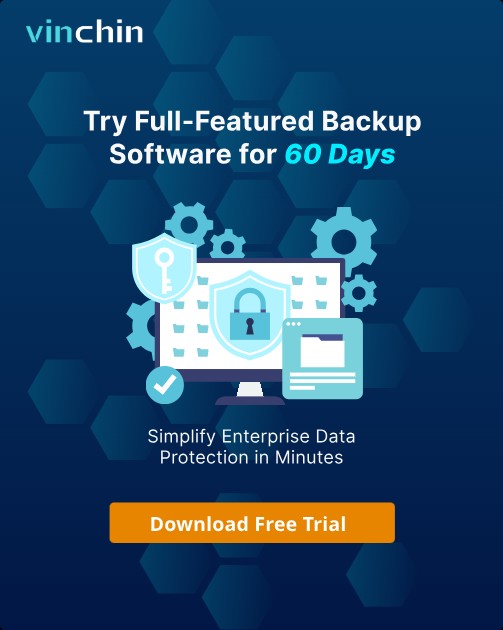-
Which kind of vMotion do you need for VM migration without shared storage?
-
How to perform vMotion migration without shared storage?
-
How to migrate VM without vMotion?
-
How to migrate VMware VM with a backup?
-
VMware vMotion FAQs
-
Sum Up
What makes VMware's product outstanding is its good performance and abundant features. vMotion is one of the popular features in VMware vSphere. After all, VM migration is the common work in data center for server maintenance, storage maintenance, load balance, etc.
Can you use vMotion to migrate VM in VMware virtual environment without shared storage? The answer is yes because it is said that vMotion doesn't require environment with shared storage in VMware's statement, but you still need to know the requirements and limitations for vMotion without shared storage including vMotion license, ESXi 5.1 or later, persistent mode, destination host access, etc.
As a result, shared storage should not be the factor you should consider now. The next step is to consider which kind of vMotion you need to perform because there are different kinds of vMotion options for different needs.
Which kind of vMotion do you need for VM migration without shared storage?
vMotion is the feature to let users perform live VM migration, which means you don't need to shut down the VM during the migration process. For different needs, you could have different types of vMotion.
Standard vMotion: If you wants to move the entire virtual machine, standard vMotion would help you migrate the it to another host while it is running. The host must have access to both source and destination datastores.
Storage vMotion: If you just want to change the datastore of VM, storage vMotion would help you change only the datastore of VM but remain the VM on the original host. Storage vMotion
Cross vCenter vMotion: If you would like to migrate ESXi VM between vCenter Server instances, you could perform Cross vCenter vMotion to migrate VM. Cross vCenter vMotion has high requirements than standard vMotion and storage vMotion. For vSphere 7.0 U1c and later versions, the Advanced Cross vCenter vMotion is supported to allow you to migrate VM more conveniently.
How to perform vMotion migration without shared storage?
ESXi VM migration is very humanized. The whole process would be completed in vCenter. Here we take standard vMotion as an example.
1. Log in to vCenter, right-click the virtual machine to migrate, and select Migrate. The migration wizard would pop up.
2. Select Change both computer resource and storage as the Migration Type, and click Next.
3. Select the target resources for the VM, and click Next.
4. Review your task and click Finish.
How to migrate VM without vMotion?
vMotion is not the only choice to migrate ESXi VM. If vMotion could not be performed in vCenter, you still have other methods to migrate VM.
vMotion is a kind of hot VM migration, so if hot migration fails, you still have cold migration. You need to shut down the VM and then select VM in vCenter as the last section said to perform cold migration.
Except for using migration wizard, VM migration could also be completed by manual exporting and importing. You need to export VM to OVF format and then import it using vCenter. The detailed steps could be found in How to Migrate VM without vMotion.
How to migrate VMware VM with a backup?
To keep VM data safe, VM backup is indispensable. During data migration, you should also make data backup in case of data loss.
Vinchin Backup & Recovery is a professional ESXi VM backup solution. In addition, VM migration without shared storage is also allowed in Vinchin Backup & Recovery.
Agentless Backup: Complicated and time-consuming agent deployment work is not required in Vinchin Backup & Recovery because it directly interacts with the hypervisor layer to let you make backup just after adding the host to backup server.
Changed Block Tracking: Incremental backup for VMware virtual machine would be greatly accelerated to quickly complete the everyday backup tasks.
Instant Recovery: Vinchin Backup & Recovery is helpful for reducing downtime by recovering a failed VM on its original host or another host in 15 seconds.
Cross-Platform Recovery: If you are using multiple hypervisors. Vinchin Backup & Recovery allows you to smoothly migrate VM between 10 mainstream virtual platforms including VMware, XenServer, OLVM, RHV, etc.
All your operations are completed in a user-friendly web-based console and there are other fascinated features like Data Deduplication and Compression (saving up to 60% backup storage), LAN-free Backup (leaving production network not be influenced), Granular Restore (restore certain missing files from backup files), etc.
In the intuitive web console, you can easily move VM by restoring it:
1. Select the VM backup data
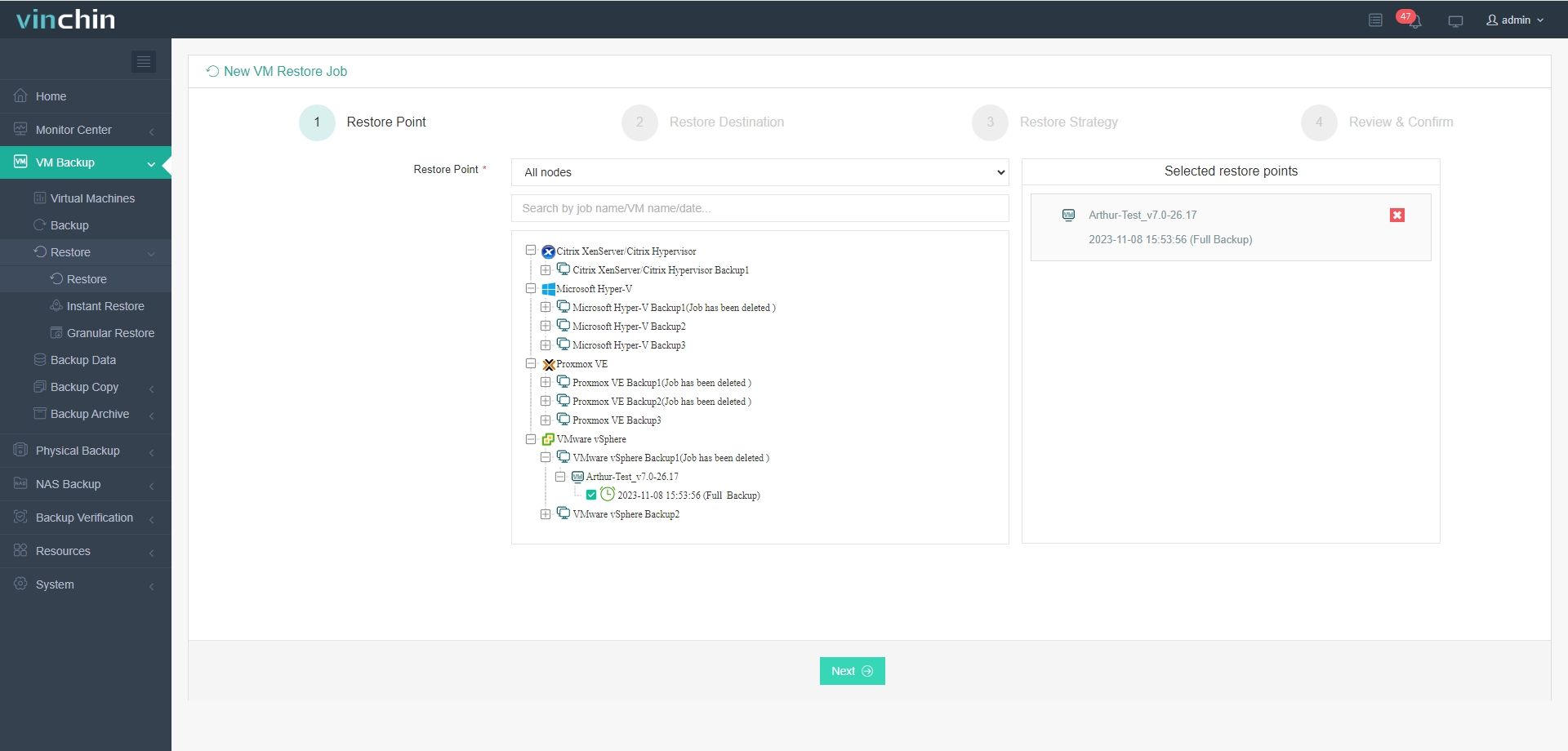
2. Select the destination host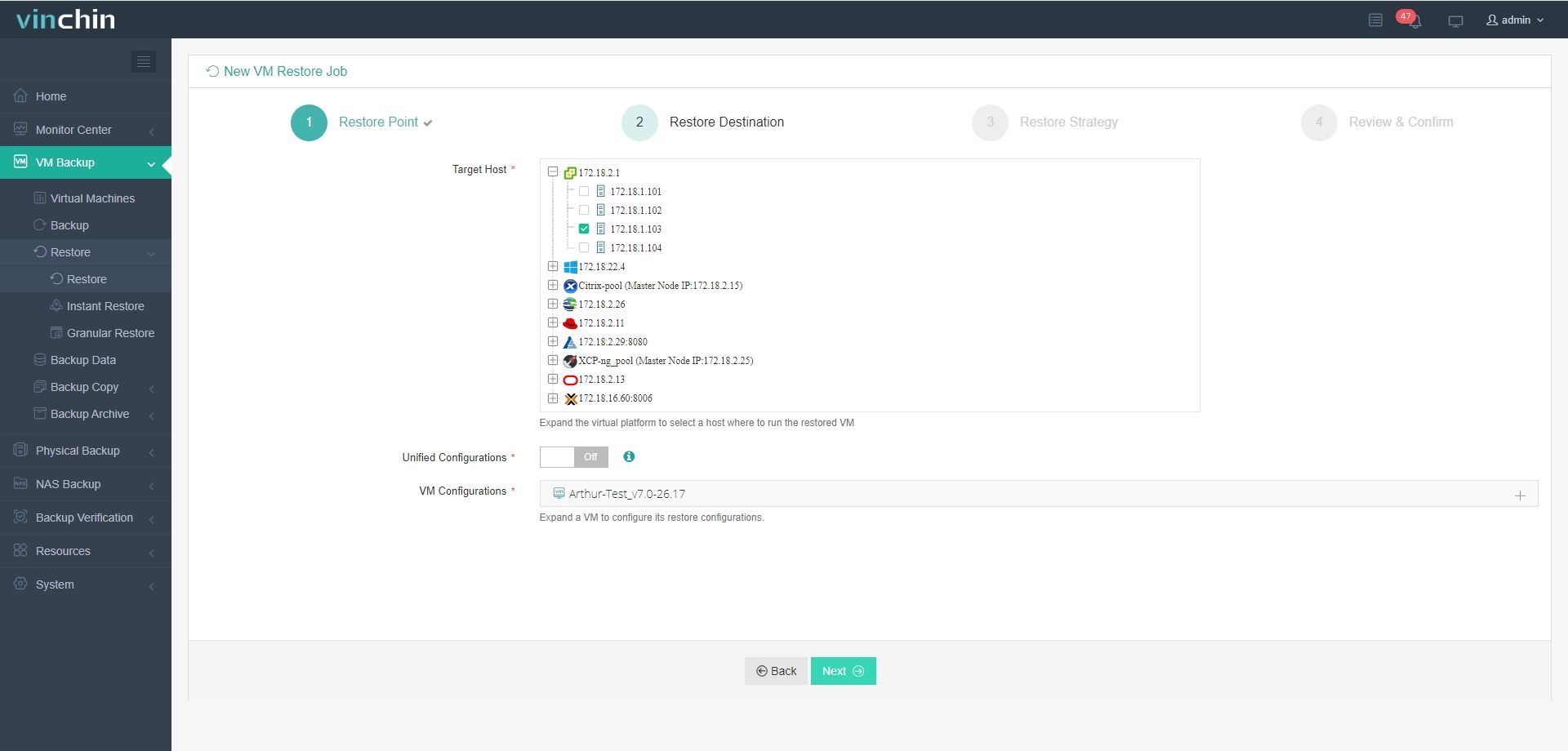
3. Select the backup strategies
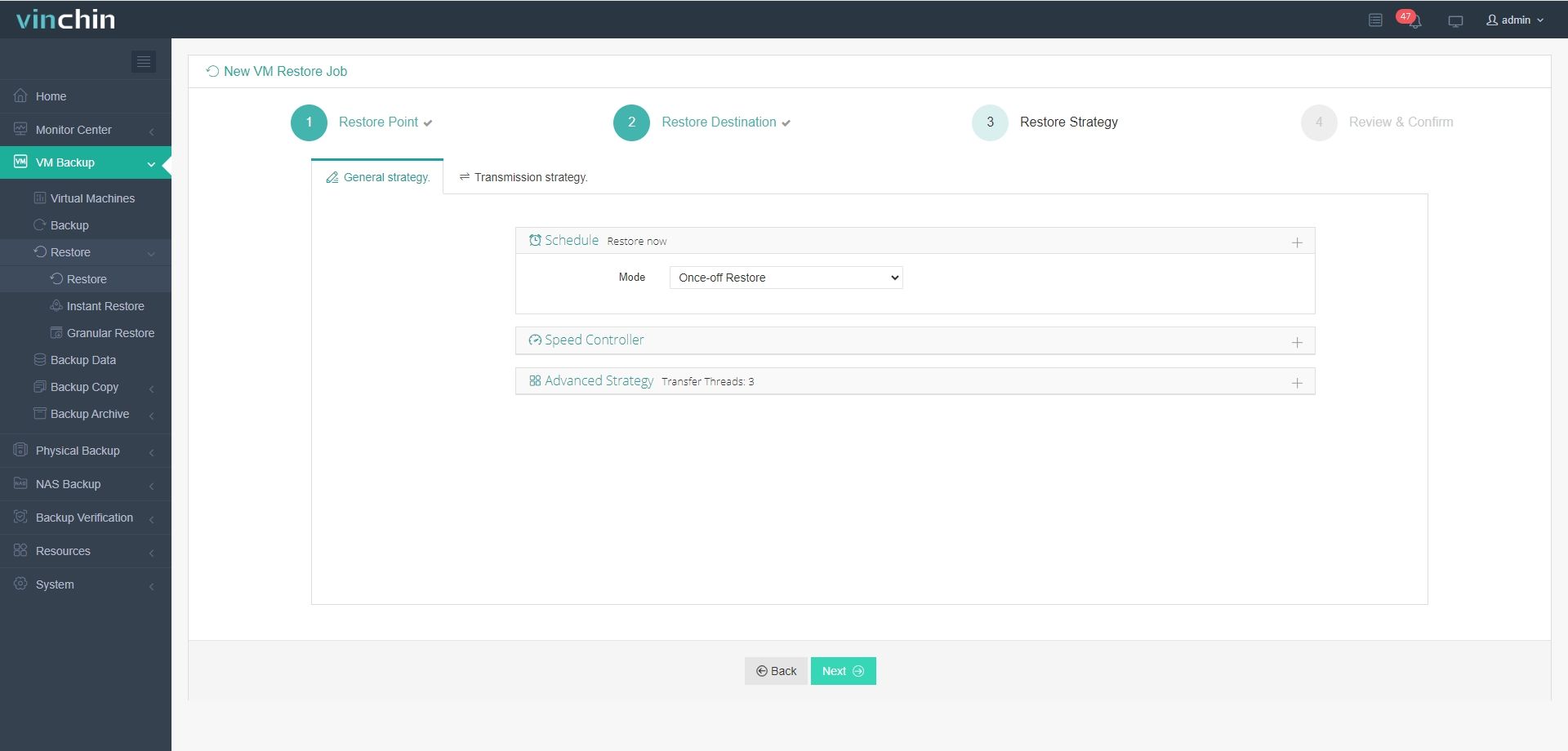
4. Submit the job
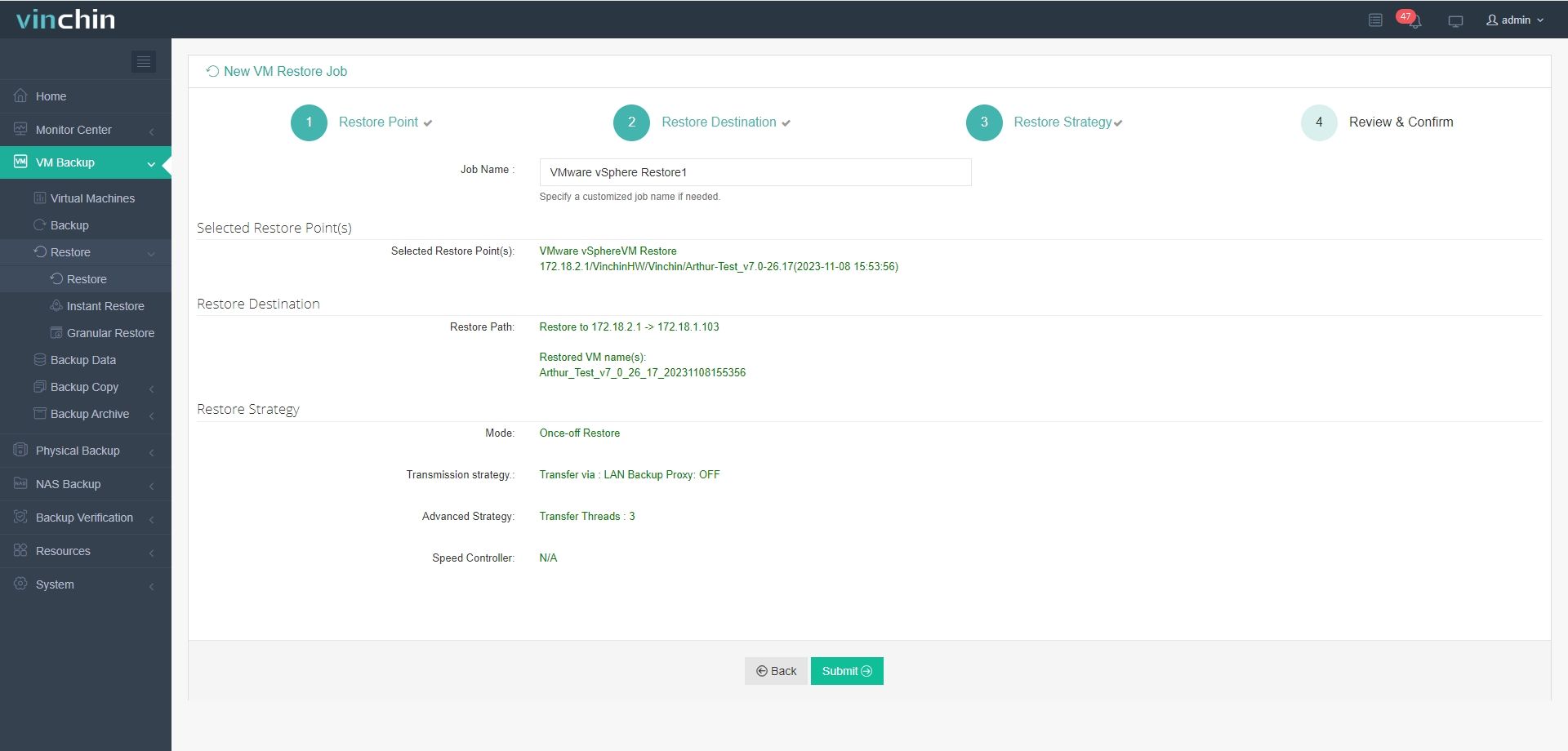
Just download it to have a 60-day full-featured free trial to experience all the features of Vinchin Backup & Recovery.
VMware vMotion FAQs
Q1: Can I vMotion between hosts with different CPU models?
A1: Yes. Enable EVC on the cluster or ensure compatible CPU feature sets so the destination host masks or matches required CPU features before vMotion.
Q2: What happens if network connectivity drops during a vMotion?
A2: The migration will pause and either retry or abort, leaving the VM running on the source; check the vCenter task and re-run MIGRATE if needed.
Q3: How can I safely test vMotion without impacting production?
A3: Create isolated test VM > Take snapshot > Perform vMotion via MIGRATE > Validate VM services and performance > Revert snapshot if needed
Sum Up
You could perform vMotion without shared storage because there are no requirements for environment with shared storage during vMotion migration. You need to know which kind of vMotion you need like standard vMotion, storage vMotion or cross vCenter vMotion, and follow its requirements and limitations.
vMotion is not the only way to migrate ESXi virtual machine. Cold migration and manual migration are also introduced in this passage.
Vinchin Backup & Recovery is the solution for both VM backup and migration. It has served users from all over the world with its excellent performance. Don't forget to try it.
Share on:





